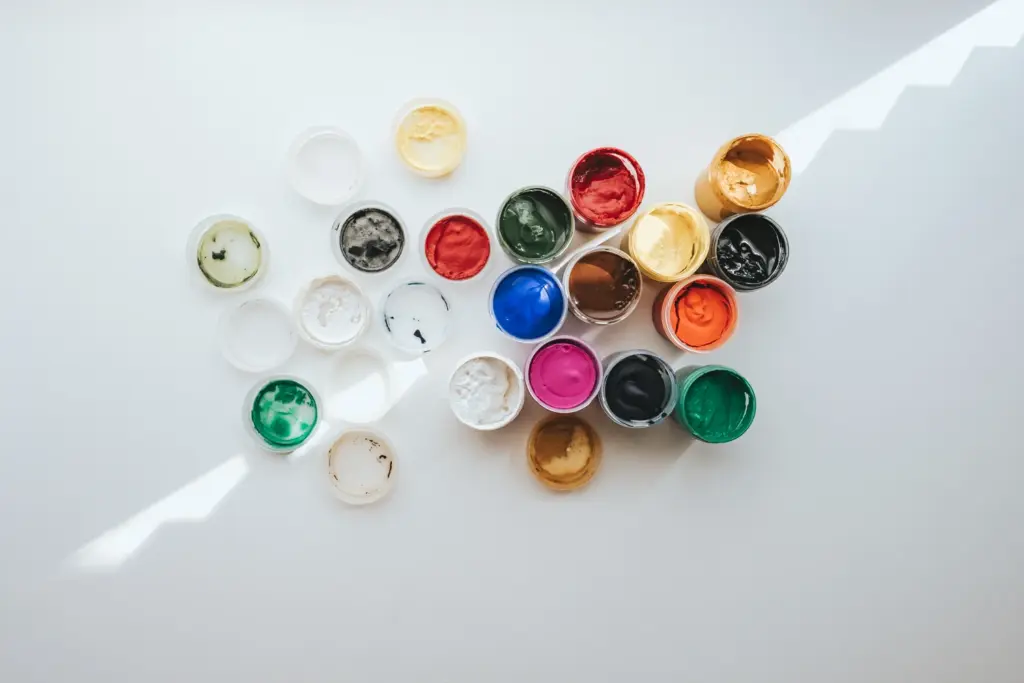Painting
Enamel Paint: A Complete Guide and Best Uses
Enamel paint is a durable, glossy finish used for surfaces that need tough, long-lasting protection. It’s ideal for high-traffic areas and offers both a practical and aesthetic solution to home projects. Here’s everything you need to know about enamel paint, its uses, and how to apply it.
What Is Enamel Paint?

Enamel paint is known for its ultra-hard, glossy finish. Traditionally, it’s solvent-based (oil or urethane), but newer water-based options are now available. Waterborne enamel is easier to work with and cleans up more easily, though solvent-based enamels provide a harder, more durable finish.
Is Enamel Paint Safe?
Enamel paint is generally safe to use, but if you’re working with solvent-based products (oil or urethane), make sure to work in a well-ventilated area and wear a mask. These products can produce strong fumes that may be harmful in poorly ventilated spaces. Water-based enamels are safer, with fewer fumes and lower VOCs, making them ideal for homes with children or pets.
How Long Does Enamel Paint Take to Dry?
Enamel paint dries to the touch in 2-6 hours, but it takes 24-72 hours to fully cure. Water-based enamel dries faster, while oil and urethane-based enamels take longer to cure. It’s important to let the paint fully cure for maximum durability, especially in high-traffic areas like floors and cabinets.
How Much Does Enamel Paint Cost?
Enamel paint costs between $80 to $100 per gallon, depending on whether it’s oil or water-based and its specific formulation. The price can vary depending on the brand and purpose (e.g., for cabinets or metal surfaces).
What Should You Use Enamel Paint For?
Enamel paint is perfect for:
- Cabinets and trim: Its durability and washability make it ideal for high-use areas.
- Doors and furniture: Enamel’s resistance to wear and cleaning chemicals makes it a go-to choice.
- Floors: Especially in high-traffic areas where you need a tough, long-lasting finish.
- Outdoor items: Enamel spray can be used to refinish metal surfaces, grills, and outdoor furniture.
What Should You Avoid Using Enamel Paint For?
Avoid using enamel paint on:
- Walls and ceilings: The glossy finish highlights imperfections, which can be difficult to fix on large surfaces.
- Play areas or children’s equipment: Due to the long drying time, there are faster-drying alternatives for these surfaces.
- Stairs: Enamel’s ultra-glossy finish can be slippery, making it unsuitable for stairs.
Enamel Paint Pros and Cons
Pros:
- Extremely durable and long-lasting
- Washable and resistant to stains
- High-gloss sheen that’s easy to clean
Cons:
- Long drying and re-coat times
- Can be expensive
- High VOC levels in solvent-based enamels
How to Paint With Enamel Paint
- Prepare the Surface: Clean thoroughly and remove old paint and rust if needed.
- Prime: Consider priming, especially for metal surfaces or to ensure a smooth finish.
- Ventilation: Ensure good ventilation, especially for solvent-based enamels.
- Application: Apply two thin, even coats. Let the first coat dry before re-coating.
- Curing: Allow the paint to fully dry and cure before using the surface.
FAQ
- Which is thicker: Enamel or latex paint? Enamel is thicker than latex paint, which can lead to drips or sagging on vertical surfaces if applied too heavily.
- Can you paint enamel over latex? Yes, but always prime the surface first, especially if painting over semi-gloss latex.
Enamel paint is a great choice for durability, but it’s important to follow proper application techniques and allow for ample drying and curing time to get the best results.